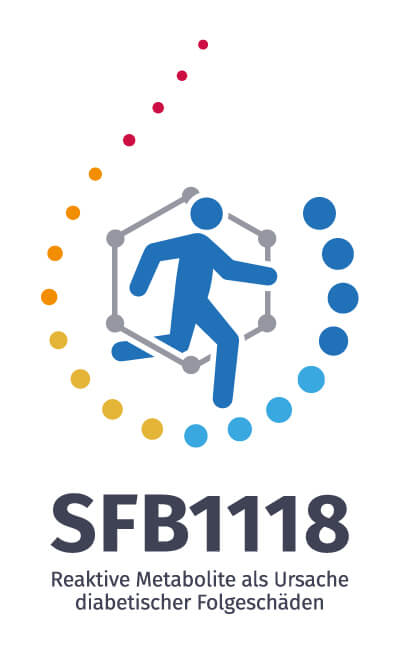CRC 1118 Reactive metabolites as a cause of diabetic complications
The diagnosis and treatment of individuals with type 1 and 2 diabetes is primarily by their blood glucose. However, it has been shown that the development of complications can neither be explained nor predicted by an individual’s blood glucose or HbA1c. For instance, the DCCT-study showed that only 11% of diabetic complications can be explained by HbA1c and diabetes duration in type 1 diabetes. The UKPDS-study showed that the absolute risk reduction of nephropathy by good glucose control reaches only 0.04 %, and in several studies, it has been shown that HbA1c and glucose are only very poor predictors of diabetic complications. Furthermore, it has been suggested that aggressive lowering of glucose may be harmful in type 2 diabetes. Blood glucose levels are only able to precisely predict coma, in which 100% resubmission can be achieved by intensive glucose lowering.
This consortium therefore seeks to understand this disconnection between glucose and complications by focusing on the role of intracellular reactive metabolites, in particular reactive oxygen species and dicarbonyls, in mediating cellular dysfunction and organ damage. To achieve this aim, the consortium has three corner stones; the first tries to understand the mechanisms by which reactive metabolites are increased and accumulate in diabetes. The second is the study of how reactive metabolites induce cellular dysfunction through interactions with the DNA and proteins of a cell and the third studies the enzymatically-dependent pathways which control the formation and accumulation of reaction metabolites. Through these corner stones it is anticipated that the development of complications can be prevented and that already existing complications would be driven into remission.


